Arabic Possessive Pronouns With Examples (Dhamir muttasil)
Arabic possessive pronouns vary in form depending on the gender and number of the noun they replace. The gender and number of the possessive pronouns in Arabic must agree with the gender and number of the noun possessed, not that of the possessor.
Advertisements
What Are Arabic Possessive Pronouns?
Arabic possessive pronouns are called ضَمِيْرٌ مُتَّصِلٌ (plural: الضمائر المتصله) in Arabic and pronounced dameerun muttasil (Plural: Admaa irul muttasilah). They are my, your, his, her, our, their and used to indicate ownership of something. In Arabic, as with object pronouns, they take the form of suffixes and are attached to the noun that’s owned.
Possesive Pronouns Arabic
The table below shows the complete possessive pronouns suffixes in Arabic, their transliterations and meanings.
| Arabic | Transliteration | English |
| ـي | -i | me |
| ـكَ | -ka | you (masc.) |
| ـكِ | -ki | you (fem.) |
| ـه | -hu | him |
| ـها | -ha | her |
| Dual | ||
| ـنا | -na | us (two people) |
| ـكما | -kuma | you (two people) |
| ـهما | -huma | them (two people) |
| Plural | ||
| ـنا | -na | us |
| ـكم | -kum | you (masc.) |
| ـكن | -kunna | you (fem.) |
| ـهم | -hum | them (masc.) |
| ـهن | -hunna | them (fem.) |
Arabic Possessive Pronouns Attached To Nouns Examples
Singular
- My pen قَلَمِيْ Qalami
- His pen قَلَمُهُ Qalamuhu
- Her pen قَلَمُهَا Qalamuha
- Your pen (male) قَلَمُكَ Qalamuka
- Your pen (female) قَلَمُكِ Qalamuki
Dual
Advertisements
- Their pen (2) قَلَمُهُمَا Qalamuhumaa
- Your pen (2) قَلَمُكُمَا Qalamukumaa
Plural
- Our pen قَلَمُنَا Qalamunaa
- Your pen (male) قَلَمُكُمْ Qalamukum
- Your pen (female) قَلَمُكُنَّ Qalamukunna
- Their pens (female) قَلَمُهُنَّ Qalamuhunna
- Their pen (male) قَلَمُهُمْ Qalamuhum
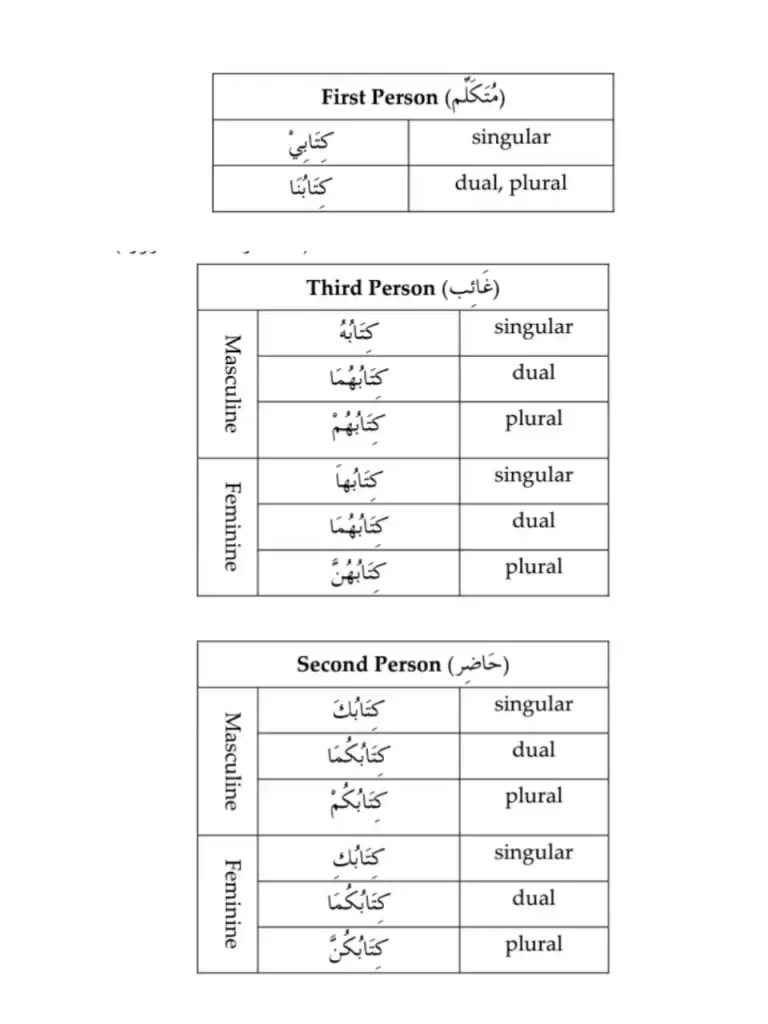
Explanatory Note
The above examples illustrate attached pronouns. Some points may be noted about these pronouns,
- These pronouns do not occur independently; instead they are attached to a noun, verb or particle.
- Pronouns attached to nouns appear in the genitive case as the second term of the Idafa phrase.
- Pronouns added to particles also occur in the genitive case.
- Pronouns attached to verbs occur the accusative case as the object of a verb.
If the letter preceding a singular, masculine, third person pronoun suffix carries dhumma, or fatha, dhumma. If the Preceding letter has kasrah, then the pronoun has a kasrah.
When we attach pronoun suffixes to nouns, we are indicating who possesses the nouns and we are also making the nouns definite.
For example, “his pen” in Arabic is a combination of قَلَم and the suffix هُ When we combine them we get قَلَمُهُ.
Advertisements
Take note that the noun’s case ending is now without nunation. This is due to the fact that the word is now definite. When a word has a pronoun suffix attached to it, it will show its case but it will not have nunation.
Thus “your pen” (masc.) is قَلَمُكَ and “their pens” (masc.) is قَلَمُهُمْ.
When we add a pronoun suffix to a word which ends in a ة, the ة is written and pronounced as a regular ت.
Advertisements
For example “your article” is مقالتكَ and is pronounced “maqaalatuka”. The case ending is written between the ت and the suffix. Of course, “my article” مقالتي (maqaalati) will not be inflected.
If the noun is dual (ending in ان– or ين– ) or a sound masculine plural (ending in ون– or ين– ), the ن -nuun is dropped to make it easier for pronunciation.
- Her (two) eyes عَينَيها eyes (two) عَينَين
Nouns with possessive suffixes are considered definite, so adjectives describing them have the definite article ال because of adjective agreement.
- Our beautiful cat قطتنا الجميلة
The possessive adjective ‘its’ doesn’t exist in Arabic; because nouns are gendered, you use the possessive pronouns for his ـه , and her ـها .
The pronouns mine, yours, his, hers, etc.. do not exist in Arabic either.
Refer to Demonstrative Pronouns in Arabic With Examples (Ism Ishara)
Arabic Possessive Suffixes To Particles
A pronoun can also be attached to particles. Such a pronoun is known as the pronoun attached to a particle in the genitive case. The paradigm of these pronouns will be as follows:
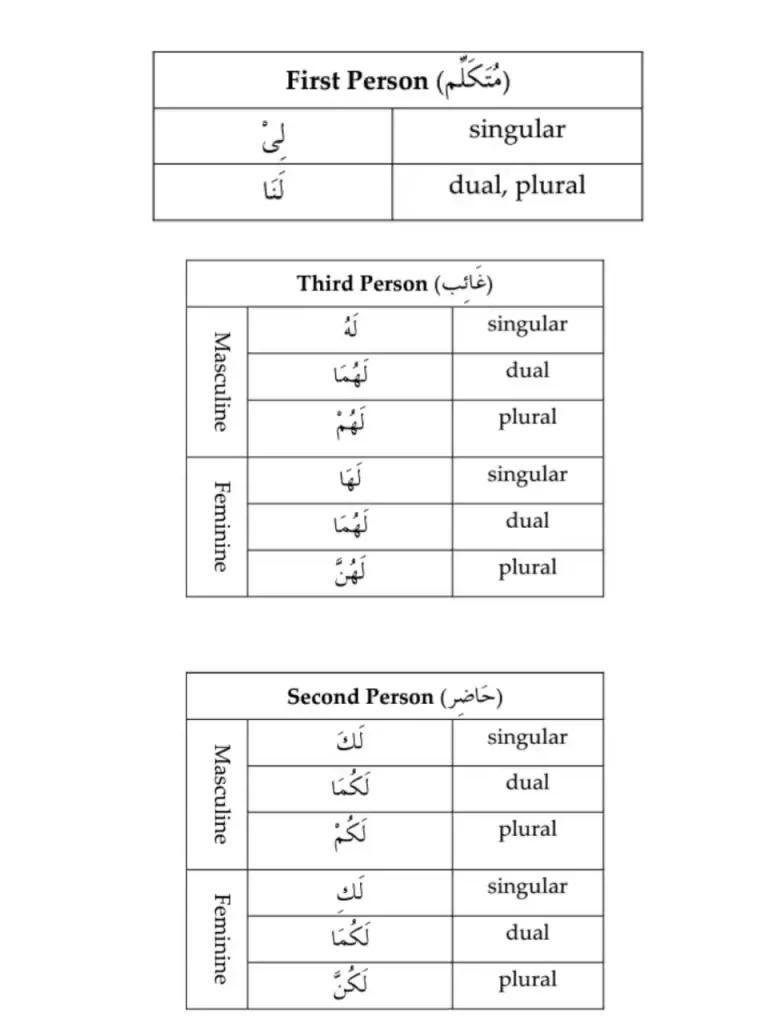
Examples
First Person
- These are my books هَذِه الْكُتُبُ لَي
- These are our books هَذِه الْكُتُبُ لَنا
Second Person
- These are your books (male) هَذِه الْكُتُبُ لَكَ
- These are your books (female) هَذِه الْكُتُبُ لَكِ
- These are your books (dual feminine and masculine) هَذِه الْكُتُبُ لَكما
- These are your books (plural masculine) هَذِه الْكُتُبُ لَكم
- These are your books (plural feminine) هَذِه الْكُتُبُ لَكنَّ
Third person
- These books belongs to him هَذِه الْكُتُبُ لَهُ
- These books belongs to them (dual masculine). هَذِه الْكُتُبُ لَهُما
- These books belongs to them (plural masculine). هَذِه الْكُتُبُ لَهُم
- These books belongs to her هَذِه الْكُتُبُ لَهُا
- These books belongs to them (dual feminine) هَذِه الْكُتُبُ لَهُما
- These books belongs to them (plural feminine) هَذِه الْكُتُبُ لَهُنَّ
In the same way, one can attach the particle (بِ), (من), (على), (الى), etc. and form a similar paradigm.
Hereunder follow examples of the particles (بِ), (من), (على), (الى), attached to the pronouns:
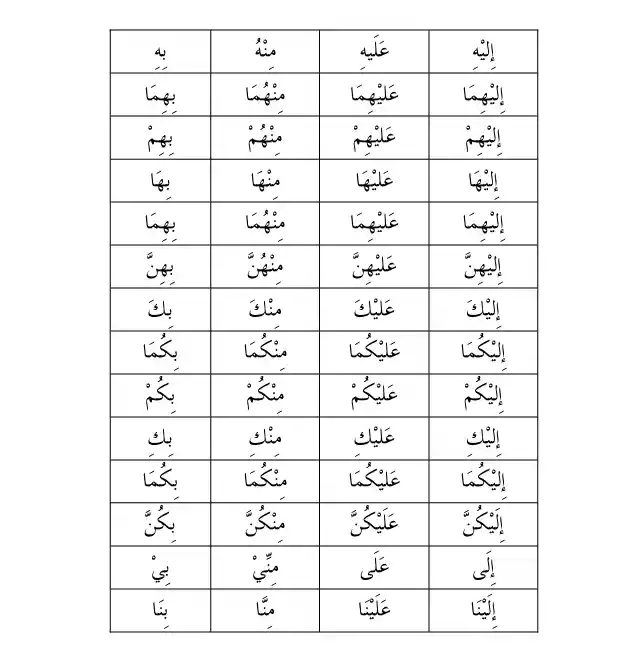
When a pronoun suffix is attached to a verb, it indicates the Direct Object of the Verb (who or what is receiving the action).
- She hit him ضَرَبَتْهُ
Conclusion
The possessive pronouns in Arabic are fairly easy to learn as there aren’t as many variations to them in comparison to the conjugation of different verbs in Arabic. Once you learn these rules, you will be able to use them in your speech, writing and reading without worry.
Advertisements

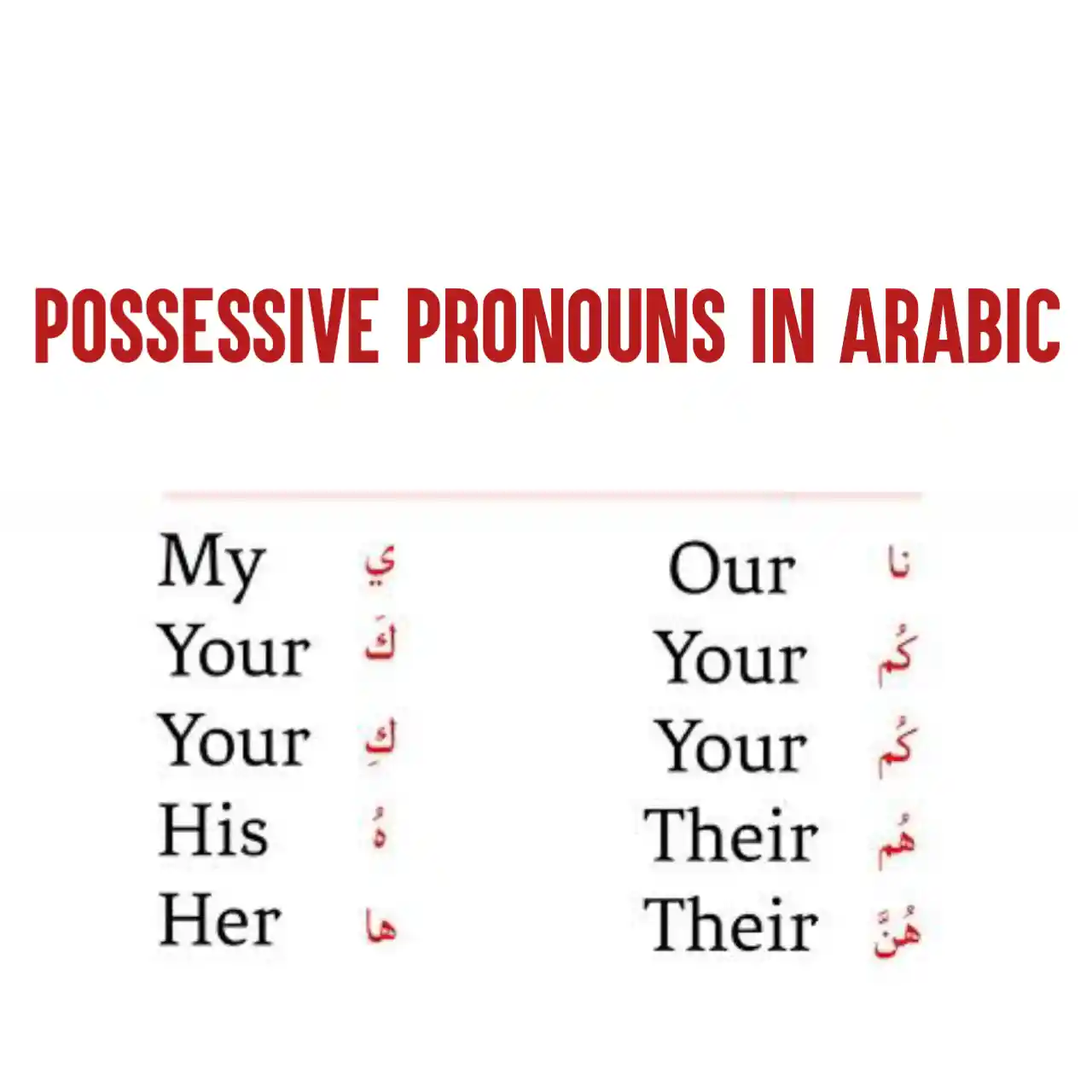


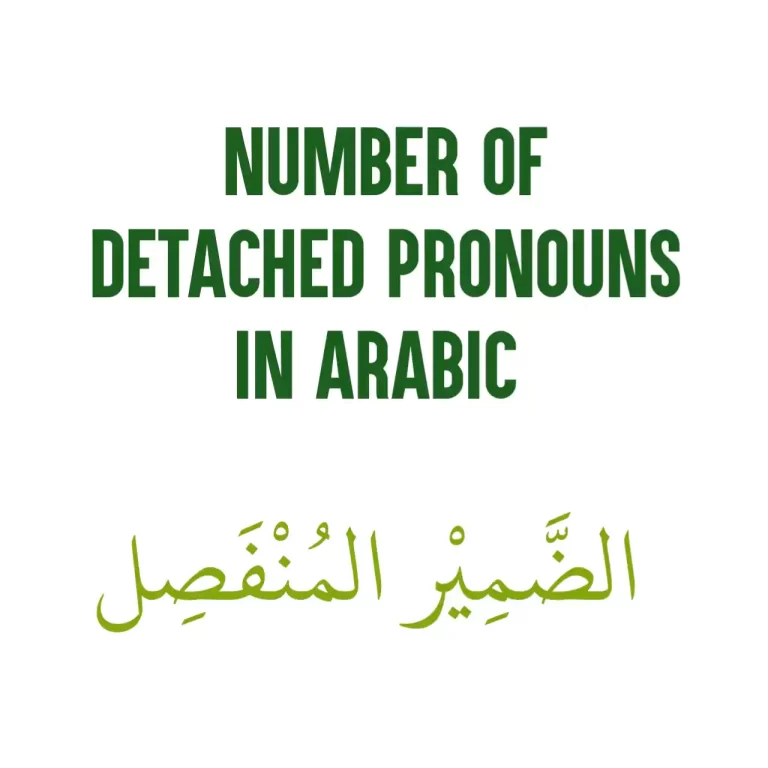
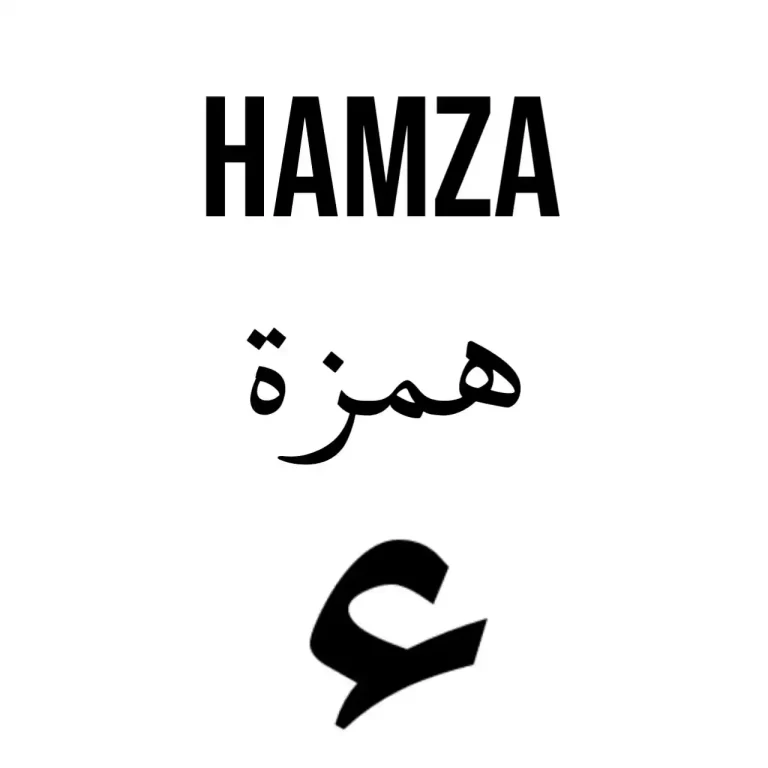
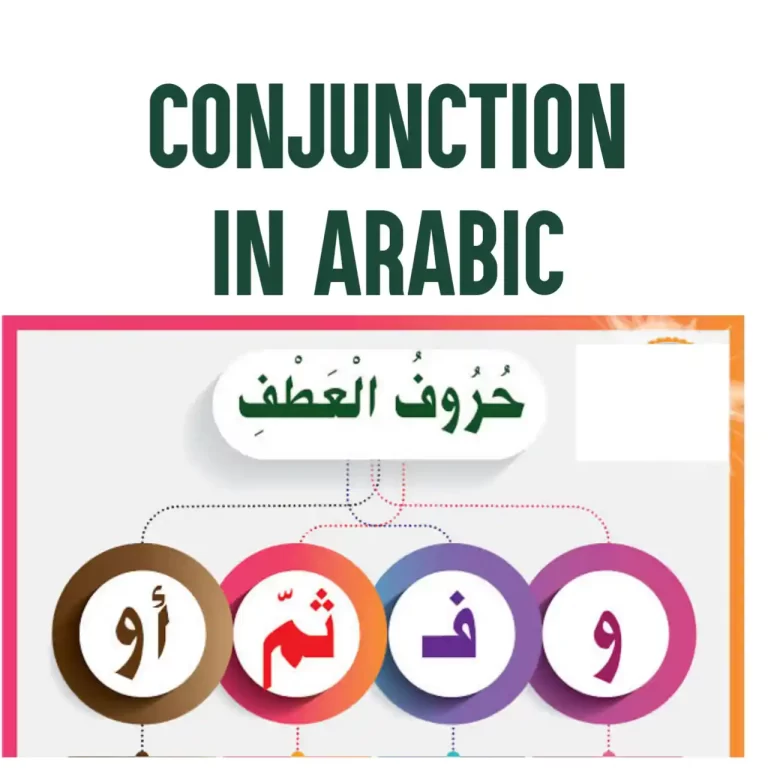
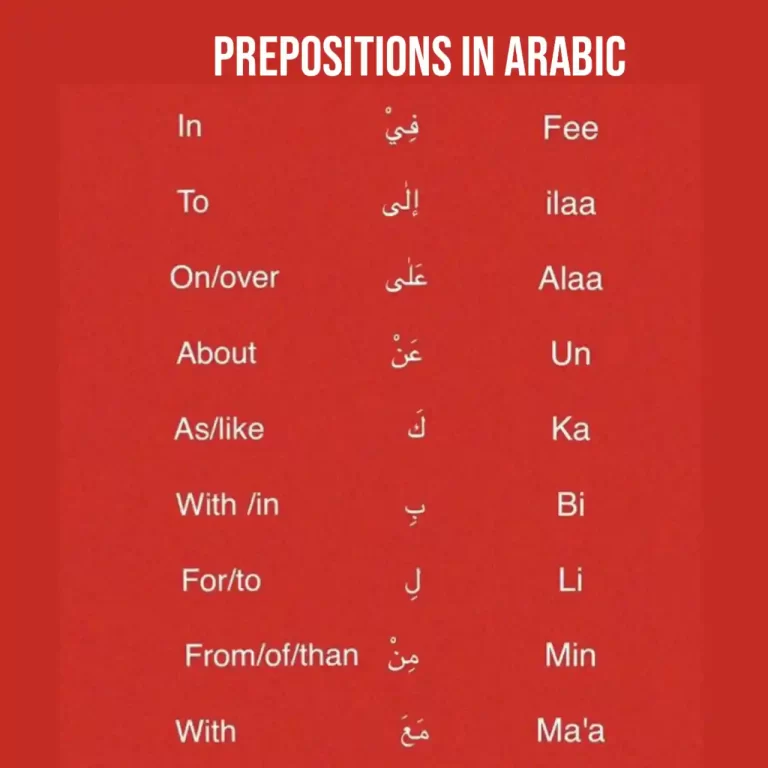
4 Comments